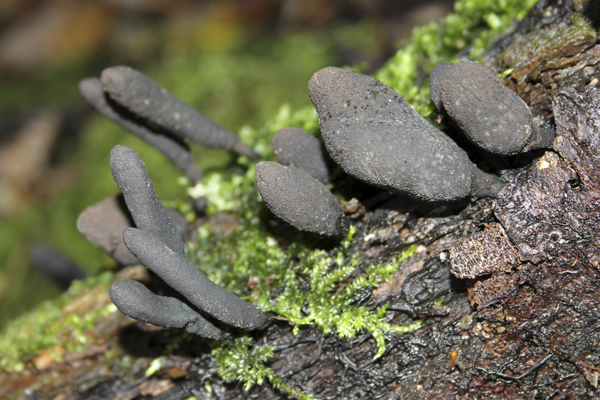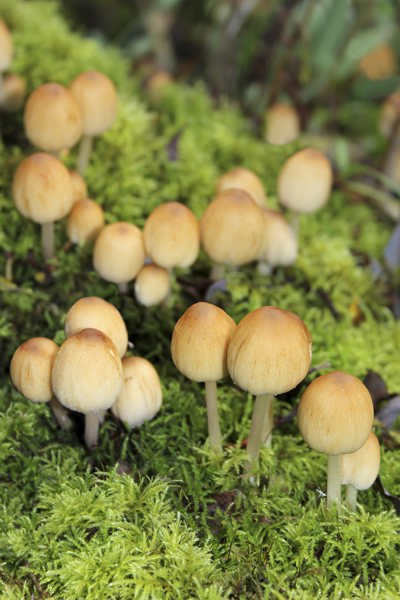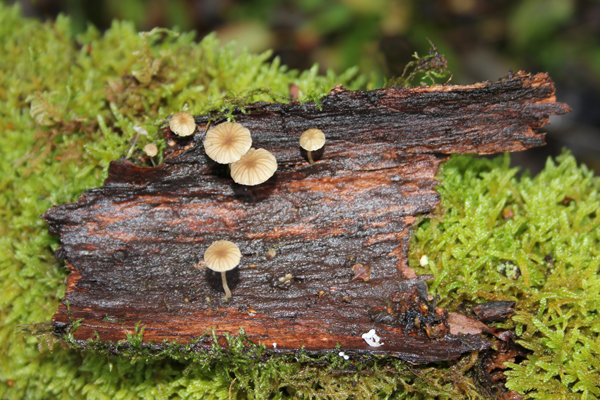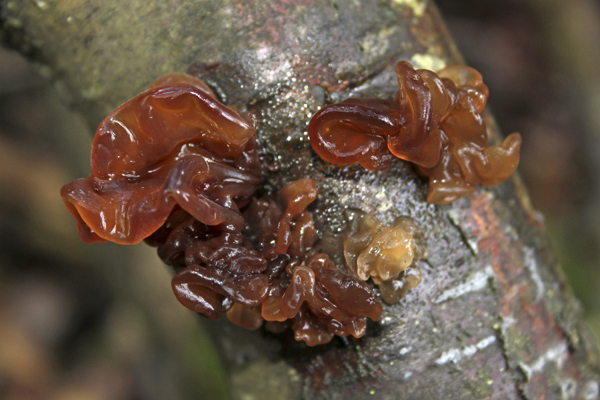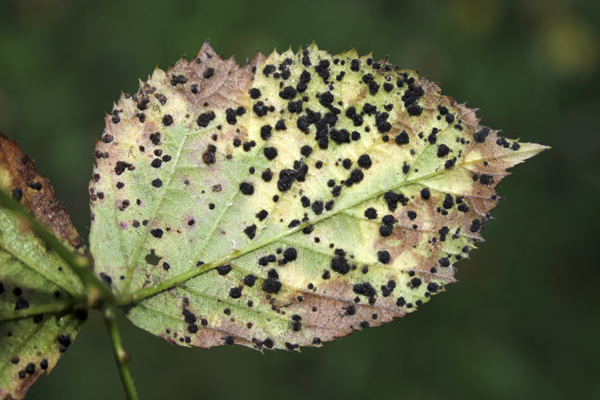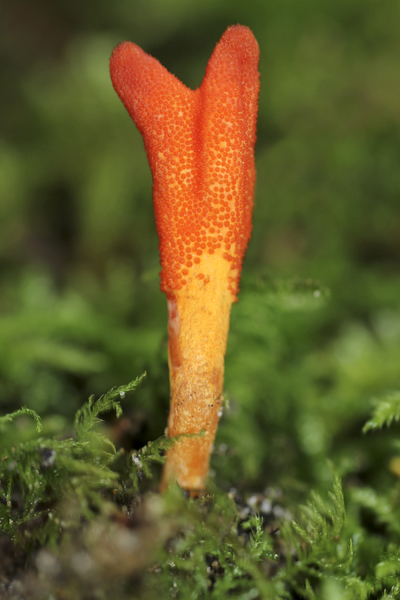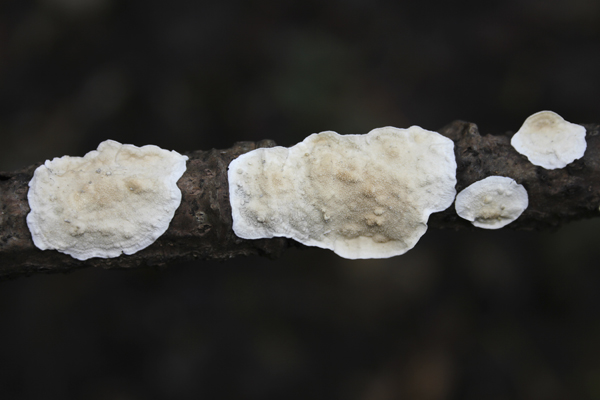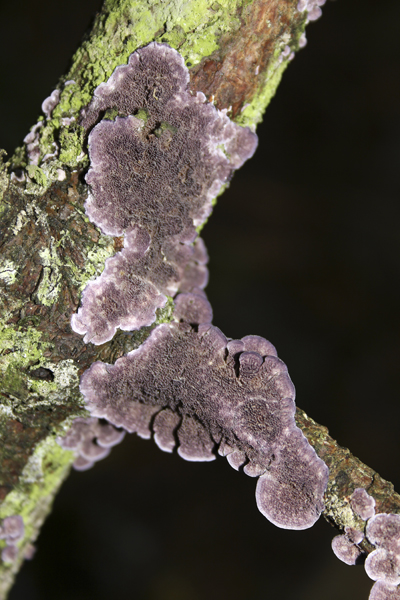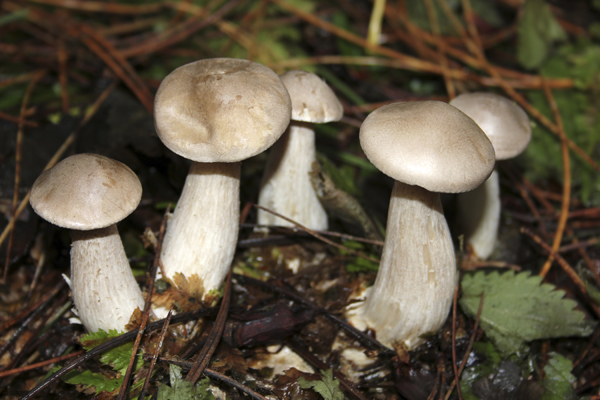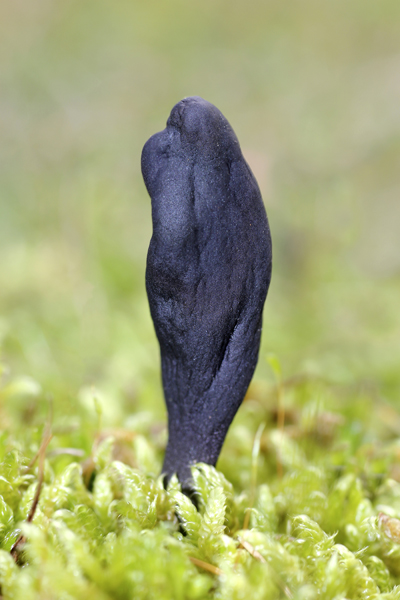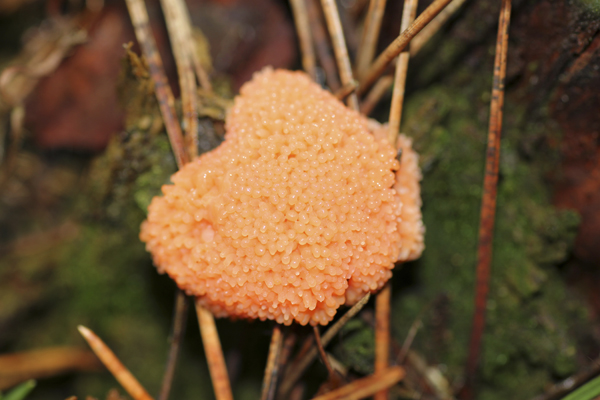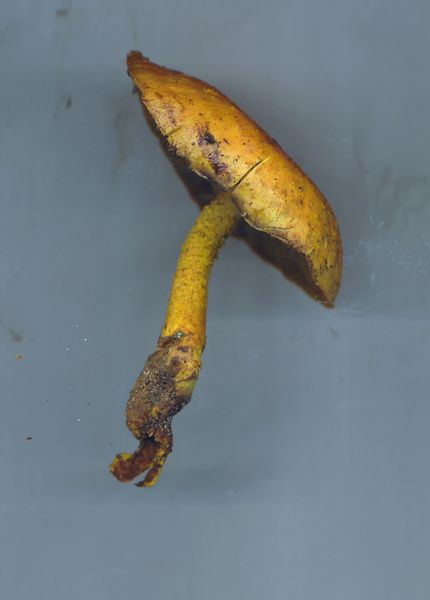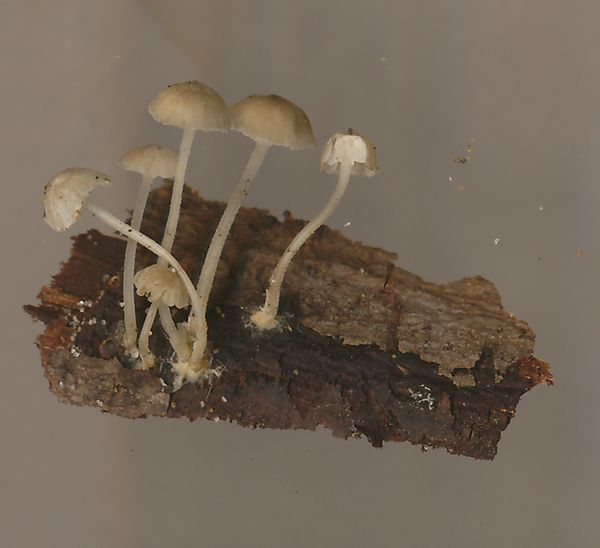The two Dave’s, Jim Hughes, Chris Butterworth and I joined members of the North-west Fungus Group for the Ken Jordan Memorial Fungal Foray at Ainsdale led by Tony Carter. In the undergrowth beside the Natural England Warden’s office we found a large but decayed Fly Agaric Amanita muscaria and a Blackfoot Polypore Polyporus leptocephalus (formerly P. badius).
Sycamore Tar Spot
Sycamore Tar Spot Rhytisma acerinum covered the Sycamore Acer pseudoplatanus leaves and a long row of Dead Moll’s Fingers Xylaria longipes similar to Dead Man’s Fingers Xylaria polymorpha but with long distinguishable stipes was growing on its favourite substrate a fallen, moss covered branch of Sycamore. In the field that is occasionally grazed by sheep we found Shaggy Scalycap Pholiota squarrosa growing at the base of a tree.
Dead Moll’s Fingers
We wandered to the area around the pond finding an impressive collection of Glistening Ink Cap Coprinus micaceus growing on a fallen log.
Glistening Inkcap
Two Mycena species are quite common in these woods – Nitrous Bonnet Mycena leptocephala which have greyish conical caps and fragile stems and a distinctive odour of bleach and two Milking Bonnets – White Milking Bonnet Mycena galopus var. candida and Black Milking Bonnet Mycena galopus var. nigra whose stems will ooze whitish latex if it is broken. We also found Yellowleg Bonnet Mycena epipterygia with a yellowish to yellow-green stem and Bark Bonnet Mycena speirea growing appropriately on a piece of bark.
Bark Bonnet
Scurfy Twiglet
A couple of Twiglets! – Hawthorn Twiglet Tubaria dispersa (formerly T. autochthona) which grows out of the buried, mummified berries of Hawthorn Crataegus monogyna and Scurfy Twiglet Tubaria furfuracea a rather nice cinnamon coloured cap and stipe growing on a twig. A few Jellies with Common Jellyspot Dacryomyces stillatus, Leafy Brain Tremella foliacea and Crystal Brain Exidia nucleata.
Leafy Brain
Wood Pinkgills Entoloma rhodopolium were scattered around the leaf litter. Reddish purple blotches on the upperside of Bramble leaves Rubus fruticosus aggregate was caused by Violet Bramble Rust Phragmidium violaceum, beneath the leaves they appeared as mature dark spots. The species mounted up with Blushing Bracket Daedaleopsis confragosa, Jelly Ear Auricularia auricular-judae, Stag’s Horn Fungus Xylaria hypoxylon, Birch Polypore Piptoporus betulinus, Slippery Jack Suillus luteus, Silverleaf Fungus Chondrostereum purpureum, Coral Spot Nectria cinnabarina, Peeling Oysterling Crepidotus mollis, Yellowing Oysterling Crepidotus luteolus Sepia Webcap Cortinarius decipiens, Poisonpie Hebeloma mesophaeum and Collared Mosscap Rickenella swartzii.
Violet Bramble Rust
Next there was a treat with Scarlet Caterpillar Fungus Cordyceps militaris this red finger-like fungi is about 2cm tall and is a type of entomopathogenic fungi which parasitises the buried pupae of moths and butterflies. Also noted Slender Club Macrotyphula juncea whose thin 4-5cm beige fruitbodies project from the leaf litter or a buried twig.
Scarlet Caterpillar Fungus
After a spot of lunch and watching a Red Squirrel Sciurus vulgaris scurrying around in a nearby tree we headed towards the pine woods behind the Warden’s outbuildings briefly stopping to note Deer Shield Pluteus cervinus growing on the edge of the path and Blue Roundhead Stropharia caerulea growing on the small patch of grass outside the office.
Netted Crust
A few encrusting fungi with Netted Crust Byssomerulius corium and Elder Whitewash Hyphodontia sambuci and Purplepore Bracket Trichaptum abietinum – this purplish bracket is saprophytic, growing from dead conifer wood.
Purplepore Bracket
A motley collection of slug ravaged Russulas with Bloody Brittlegill Russula sanguinaria, Crab Brittlegill Russula xerampelina with its characteristic fishy odour Coral Brittlegill Russula velenovskyi, Variable Brittlegill Russula versicolor, Birch Brittlegill Russula betularum and Ochre Brittlegill Russula ochroleuca. Clouded Funnel Cap a.k.a. Clouded Agaric Clitocybe nebularis was growing in a large circle 20ft in diameter.
Clouded Agaric
Meanwhile Spring Cavalier Melanoleuca cognata a large umbrella-shaped Fungus was noted growing in a line probably following a buried tree trunk – this species fruits twice, once in April and May and then again from August onwards until the frost begins. The small brown agaric called Conifercone Cap Baeospora myosura was found rooting on a buried pine cone. Also noted Oyster Mushroom Pleurotus ostreatus, Collared Earth Star Geastrum triplex, Common Rustgill Gymnopilus penetrans, Yellow Knight Tricholoma equestre and Pale Stagshorn Calocera pallidospathulata.
We briefly moved onto the dunes noting a collection of Earth Tongues Geoglossum sp. sticking out from the short dune grass – a sample was taken for microscopic examination as there are several similar species and later confirmed as Geoglossum cookeanum. Nearby was a Dune Waxcap Hygrocybe conicoides.
Earthtongue
Heading back into the woods to escape the wind we added to the day’s list with Common Puffball Lycoperdon perlatum, Grassland Puffball Lycoperdon lividum, a young specimen of Common Bird’s Nest Crucibulum laeve whose yellow “lid” still covered over the nest, Shield Dapperling Lepiota clypeolaria, Dapperling Lepiota erminia and the Slime Mould Tubifera ferruginosa whose fruiting body consists of a tight cluster of bright pink oblong shaped sporangia.
Slime Mould Tubifera ferruginosa
A great Fungi list for the day with some memorable species! Tony Carter let me know that 98 species were identified with six species new to the site recorded. None of them are unusual, just not previously identified. We spent a little more time in the conifer woods this time. He took a few specimens home to check the identification. He confirmed Flaming Scalycap Pholiota flammans on one specimen from the stem. It was a bit old and the cap had darkened and flattened. A fresh specimen would be quite spectacular.
Flaming Scalycap Photo Tony Carter
Two small bonnets Rancid Bonnet Mycena olida and Mycena hiemalis on mossy trees. Small means tiny.
Mycena hiemalis Photo Tony Carter
Cinnamon Navel Omphalina pyxidata Photo Tony Carter
A wide photographic selection of birds, marine life, insects, mammals, orchids & wildflowers, fungi, tribal people, travel, ethnography, fossils, rocks & minerals etc. is available on my Alamy webpage
If you are interested in the wildlife of the North-west of England and would like to join the walks and coach trips run by the Merseyside Naturalists’ Association, see the main MNA website for details of our programme and how to join us.


